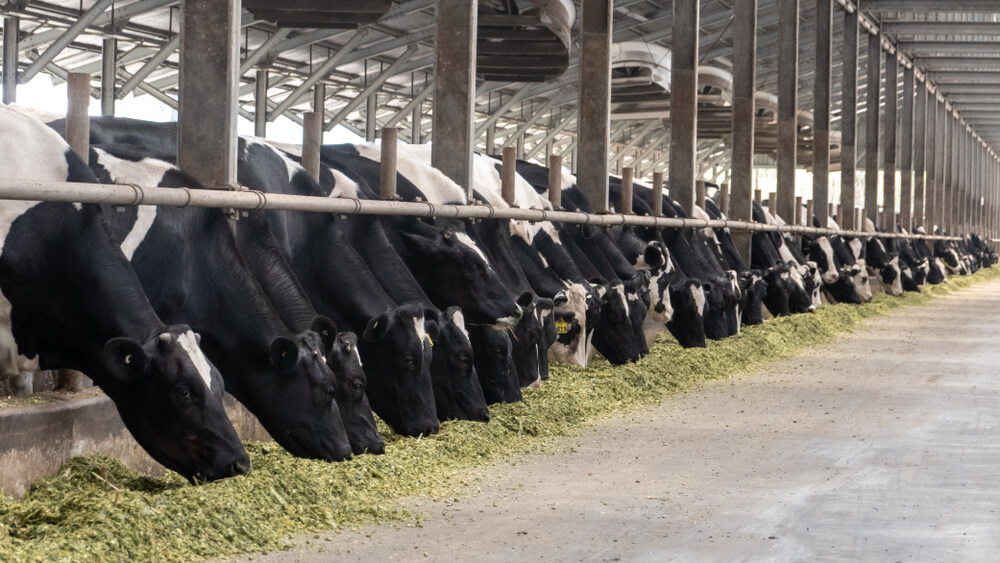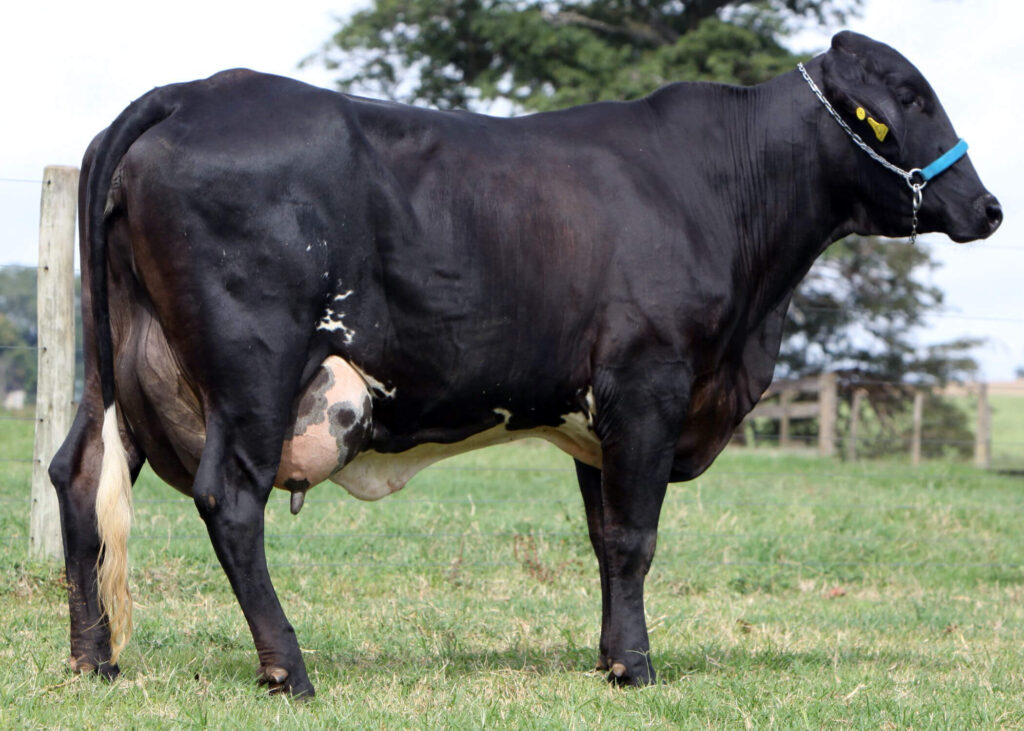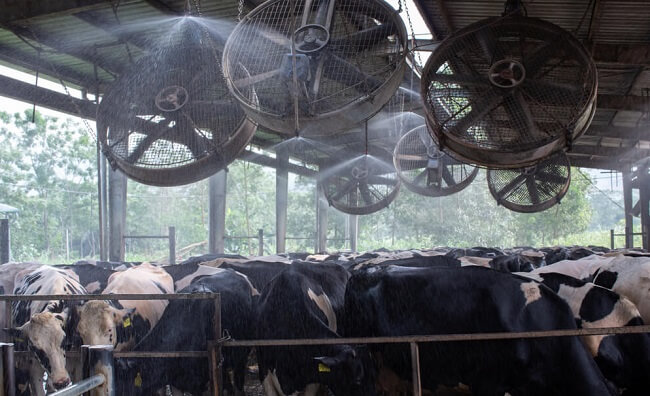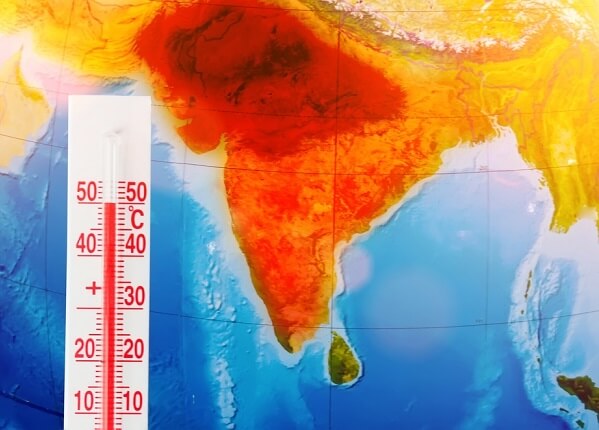Introducing dairy crossbred cattle that can tolerate heat stress during heatwaves in tropical climates.
Dairy farmers in tropical climates face the challenge of providing the ideal conditions for their dairy cows to thrive despite the harsh heatwaves that occur more often. One option to address this issue is to raise dairy crossbred cattle, which have shown excellent toughness and resilience in the face of extreme temperatures. This article investigates the numerous elements contributing to dairy crossbred cattle’s capacity to survive heatwaves in tropical locations.

Table of Contents
The Benefits of Crossbreeding in The Dairy Industry
In the dairy industry, crossbreeding is a widespread procedure that involves mating animals of different breeds to capitalize on beneficial features. When it comes to heat tolerance, crossbred cattle have proven to be more adaptable than their purebred counterparts. This is due to the introduction of genetic diversity through crossbreeding, which results in offspring that are more tolerant to environmental stresses such as heat stress during heatwaves.
Evaluating the Genetic Nature of Dairy Crossbred Cattle
Dairy crossbred cattle inherit a mixture of genetic features from their parent breeds. These breeds are carefully chosen based on individual traits such as heat tolerance, milk production, and disease resistance. Farmers may create crossbred cattle that are better suited to the requirements of tropical climates by combining these traits.
Adaptations for Heat Tolerance
Dairy crossbred cattle have a number of physiological and behavioral characteristics that allow them to tolerate high temperatures. Among these modifications are:
- Improved Sweating Mechanism: When compared to purebred cattle, dairy crossbred cattle have a more efficient sweating mechanism. Sweating assists them in regulating their body temperature through evaporative cooling. They can remove heat more effectively due to their enhanced sweating capacity, keeping their body temperature within a reasonable range.
- Improved Heat Dissipation: Crossbred cattle also have a higher surface area-to-body mass ratio, which helps in heat dissipation. Their increased body surface area allows for more efficient heat transfer to the surrounding environment, reducing overheating.
- Heat Tolerant Skin: Dairy crossbred cattle have skin adaptations that protect them from sun radiation. It is thicker and has more pigment, making it more resistant to UV rays. Furthermore, the skin has fewer hair follicles, which allows for better heat dissipation.

Factors Influencing Selection Crossbred Dairy Cattle Breeds
Several considerations should be addressed when selecting dairy crossbred breeds of cattle to guarantee all necessary characteristics and objectives are accomplished. Some of the important elements that can influence the selection of dairy crossbred cattle are as follows:
- Production Goals: The first step in selecting crossbred cattle breeds is to determine the dairy operation’s production objectives. Milk production volume, milk quality indicators (such as butterfat and protein content), growth rates, and specialized breeding aims are examples of such objectives. Understanding the production goals helps in determining which breeds or breed combinations are most effective at achieving those goals.
- Environmental Adaptability: Take into account the local climate, current environmental conditions, and accessible resources. Some crossbred cattle breeds may be better suited to certain climates or management practices than others. To promote optimal performance and animal welfare, factors such as heat tolerance, cold tolerance, disease resistance, and adaptability to local forage and feeding circumstances should be considered.
- Genetic Complementarity: Examine the parent breeds’ genetic features and complementarity. To get the intended results, the features and genetics of the parent breeds should complement each other. For instance, if one breed is recognized for excellent milk production but low fertility, it might be bred with another breed that excels in fertility features to attain balance.
- Health and Disease Resistance: Consider the parent breeds’ health history and disease resistance. Selecting breeds that are known to be resistant to prevalent diseases or health conditions in the region can assist minimize veterinarian expenditures while also improving overall herd health.
- Management Requirements: Cattle breeds have different management requirements, such as food, housing, and handling. Examine the compatibility of the selected crossbred breeds with the farm’s existing infrastructure and management procedures. Compatibility with labor resources, equipment, and facilities is crucial for implementation success.
- Market Demand: Understand the regional market demand for dairy products. Take into account the preferences and needs of the local market or dairy business. Certain breeds or milk quality factors may be preferred in certain markets. Aligning crossbred selection with market demand has the potential to increase profitability and market opportunities.
- Genetic Evaluation and Data: Assess the genetic potential of the parent breeds using genetic evaluation methods, performance records, and available data. Programs for genetic evaluation give data on qualities such as milk production, conformation, fertility, and health. Analyzing this data can help in picking the best parent breeds to obtain the desired results.
Dairy farmers may make informed decisions about the selection of crossbred cattle breeds that match their production goals, environmental conditions, and market demands by taking these aspects into account and completing thorough research. Collaboration with breeders, geneticists, and industry specialists can also be beneficial in the selection process.

Nutritional Considerations for Heat Stress
Nutrition is critical in assisting dairy crossbred animals to tolerate heat stress. Cows may have lower hunger and metabolic alterations during heatwaves. It is critical to supply them with a well-balanced diet that fits their energy needs while also supporting optimal health. Some dietary issues for heat-stressed cattle include:
- Increased Water Availability: Water is necessary for body temperature regulation, and dairy crossbred cattle require more water during heatwaves to manage heat stress. Farmers should provide a consistent and clean water source for their cattle to avoid dehydration and heat-related health issues.
- Electrolyte Supplement: Heat stress in cattle can cause deficiencies in electrolytes. Electrolytes in their food help them stay hydrated and restore vital minerals lost via sweating. Consultation with a veterinarian can help you determine the best electrolyte supplementation plan.
- Balanced Ration with Enough Fiber: A well-balanced ration with enough fiber content is essential for optimizing digestion and reducing heat-related digestive problems. High-fiber feeds, such as high-quality forages, improve rumen health and assure nutrient utilization.

Management Techniques for Heatwave Survival
Effective management strategies, in addition to genetic and dietary considerations, are critical for the well-being of dairy crossbred cattle during heatwaves. Here are some important considerations:
- Shed and ventilation: It is essential to provide shaded places and appropriate ventilation in the barn or pasture for heat stress care. Shade reduces direct sunlight exposure, but proper ventilation allows heat to move away and increases air circulation.
- Install Sprinkler Systems: Sprinkler systems or misters installed in the barn can assist cool the surroundings and bring respite to heat-stressed cattle. These systems simulate rainfall, which helps in heat dissipation and creates a more comfortable environment.
- Timely Milking Schedule: Changing the milking schedule during heat waves can help the cows. Milking them at cooler times of day, such as early morning or late evening, lessens heat load and stress.
Conclusion
Dairy crossbred cattle have shown to be a useful asset for tropical dairy farmers. Their genetic variety, along with adaptation characteristics, allows them to overcome the challenges caused by heatwaves. Dairy farmers can maximize the potential of crossbred cattle in their herds by applying suitable management strategies and providing optimum nutrition, ultimately leading to increased productivity and animal welfare.
Frequently Asked Questions (FAQs)
Q1. Do dairy crossbred cattle perform better in tropical climates than purebred cattle?
A1: Yes, because of their genetic diversity, dairy crossbred cattle are better adapted to hot climates and can resist heat stress.
Q2. What effect does crossbreeding have on heat tolerance in dairy cattle?
A2: Crossbreeding facilitates the combination of beneficial features from several breeds, resulting in progeny with better heat tolerance than purebred cattle.
Q3. What are a few management techniques for dairy crossbred cattle to help them deal with heatwaves?
A3: Some management methods that can assist dairy crossbred cattle to survive heatwaves include providing shade and ventilation, installing sprinkler systems or misters, and modifying the milking schedule.
Q4. What is the significance of water intake in heat-stressed cattle?
A4: In heat-stressed cattle, water intake is essential for controlling body temperature. It helps in avoiding the effects of dehydration and promotes overall health and well-being.
Q5. How can farmers ensure that dairy crossbred cattle are properly fed during heatwaves?
A5: Farmers may assure optimal nutrition by increasing the availability of water, supplementing with electrolytes, and feeding a balanced ration with adequate fiber content.
To Know More
Read our blog to learn more about FarmSeba and its services. Join us on social media. Write on “FarmSeba Help Desk” for any quarry. To learn how to use FarmSeba, watch video tutorials on our YouTube channel.
